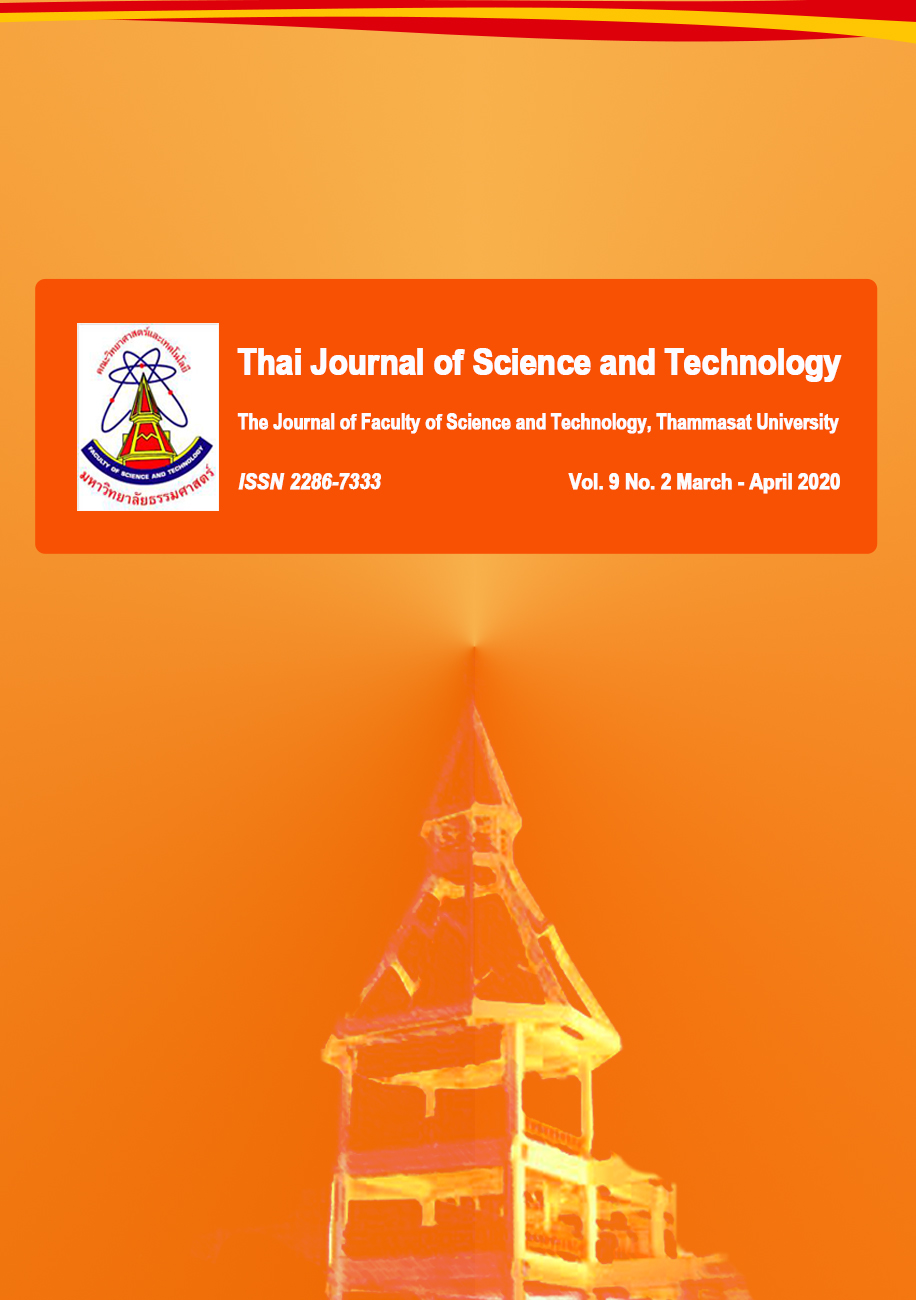ผลของการทำไม้ออกโดยวิธีเลือกตัด ต่อการชะล้างพังทลายของดินในพื้นที่สวนป่า จังหวัดแพร่
Main Article Content
Abstract
At present, forest plantations are the only source of wood in Thailand, thus logging is important. However, most plantation areas located on high ground make soil erosion easily. Since there is not much research on the effect of logging, this research is interested in studying the impact of the cutting out of wood by selection cutting on the soil erosion rates in 4 plantation areas. The main objective is to consider the impact of land use (changing from teak plantation area to the area that has been cutting out followed by the land use similar to degraded deciduous forest) on soil erosion. The results from this study illustrate that the soil erosion rates after cutting out of wood by selection cutting in all of 4 plantation areas were increased around 2.84 times of soil erosion before cutting wood. Soil erosion rates at Khun Mae Kham Me, Ma Khampong, Mae Sa Roi, and Wang Chin forest park were 78.79, 120.39, 68.36, and 60.38 tons/ha/year, respectively. These are related to the decrease of cover plant in the surface soil, which is one of the factors that protects soil surface and reduces soil erosion rate. Consequently, before cutting out of wood, we should consider carefully and appropriately about the impact that may occur in the future.
Article Details
บทความที่ได้รับการตีพิมพ์เป็นลิขสิทธิ์ของคณะวิทยาศาสตร์และเทคโนโลยี มหาวิทยาลัยธรรมศาสตร์ ข้อความที่ปรากฏในแต่ละเรื่องของวารสารเล่มนี้เป็นเพียงความเห็นส่วนตัวของผู้เขียน ไม่มีความเกี่ยวข้องกับคณะวิทยาศาสตร์และเทคโนโลยี หรือคณาจารย์ท่านอื่นในมหาวิทยาลัยธรรมศาสตร์ ผู้เขียนต้องยืนยันว่าความรับผิดชอบต่อทุกข้อความที่นำเสนอไว้ในบทความของตน หากมีข้อผิดพลาดหรือความไม่ถูกต้องใด ๆ
References
กรมพัฒนาที่ดิน, 2545, การประเมินการสูญเสียดินในประเทศไทย, กรมพัฒนาที่ดิน, กระทรวงเกษตรและสหกรณ์, กรุงเทพฯ.
มนู ศรีขจร, อรรถ สมร่าง, ไพบูลย์ ประโมจนีย์, สุทธิพงษ์ ประทับวิทย์, ไชยสิทธิ์ อเนกสัมพันธ์ และปทุมพร พังเพ็ง, 2527, การใช้สมการสูยเสียดินสากลสำหรับประเทศไทย, รายงานการประชุมวิชาการประจำปี 2527, กรมพัฒนาที่ดิน, กรุงเทพฯ.
Carle, J., Vuorinen, P. and Lungo, A.D., 2002, Status and trends in global forest plantation development, For. Prod. J. 52: 1-13.
Elliot, W., 2010, Effects of forest biomass use on watershed processes in the Western United States, Western J. Appl. For. 25: 12-17.
Evans, J. and Turnbull, J.W., 2003, Plantation Forestry in the Tropics, 3rd Ed. Oxford University Press, Oxford, 480 p.
Mondal, A., Khare, D. and Kunda, S., 2018, A comparative study of soil erosion modelling by MMF, USLE and RUSLE, Geocarto Int. 33: 89-103.
Savill, P., Evans, J., Auclair, D. and Falck, J. 1997, Plantation Silviculture in Europe, Oxford University Press, Oxford, 297 p.
Siry, J.P., Cubbage, F.W. and Abt, R.C., 2001, The Role of Plantations in World Forestry, Availible Source: http://sofew.cfr.msstate.edu/papers/25siry.pdf, August 3, 2019.
Sriwongsitanon, N., Surakit, K. and Hawkins, P.R., 2009, A water balance budget for Bung Boraphet: A flood plain wetland-reservoir complex in Thailand, Water 1: 54-79.
Sudarmadji, T., 2001, Impact of Logging and Forest Fires on Soil Erosion in Tropical Humid Forest in East Kalimanta, pp. 35-44., In Rehabilitation of Degraded Tropical Forest Ecosystems: Workshop Proceed ings, Bogor.
Wade, C., Bolding, M., Aust, W., Lakel III, W. and Schilling, E., 2012, Comparing sediment trap data with the USLE-forest, RUSLE2, and WEPP-road erosion models for evaluation of bladed skid trail BMPs, Am. Soc. Agric. Biol. Eng. 55: 403-414.
Wenger, A., Atkinson, S., Santini, T., Falinski, K., Hutley, N., Albert, S., Horning, N., Watson, J., Mumby, P. and Jupiter, S., 2018, Predicting the impact of logging activities on soil erosion and water quality in steep, forested tropical islands, Environ. Res. Lett. 13: 1-12.
Wischmeier, W.H. and Smith, D., 1965, Predicting Rainfall-Erosion Losses from Cropland East of Rocky Mountains: Guide for Selection of Practices for Soil and Water Conservation, Agriculture Handbook No.282, USDA, Washington, DC.
Wischmeier, W.H. and Smith, D., 1978, Predicting Rainfall Erosion Losses a Guide to Conservation Planning, Agriculture Handbook No.282, USDA, Washington, DC.
Wu, J., 2008, Land Use changes: Economic, social and environmental impacts, Agric. Appl. Econ. Assoc. 23: 6-10.
Zhang, H., Yang, Q., Li, R., Liu, Q., Moore, D., He, P., Ritsema, C. and Geissen, V., 2013, Extension of a GIS procedure for calculating the RUSLE equation LS factor, Comput. Geosci. 52: 177-188.


